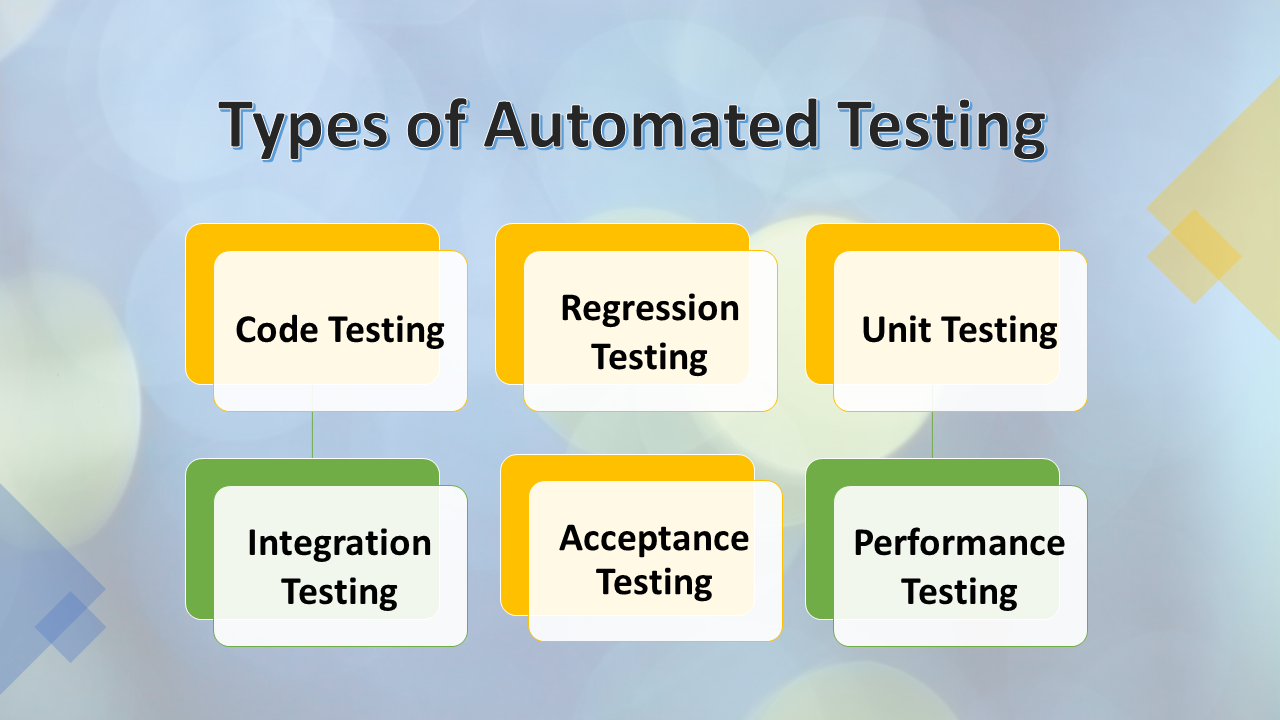Automation Testing: Key Steps to Streamline Growth Lifecycles
Automation Testing: Key Steps to Streamline Growth Lifecycles
Blog Article
From Manual to Automated Testing: A Comprehensive Overview to Transitioning Efficiently and Properly
In the world of software program screening, the change from guidebook to automated procedures has actually come to be a significantly crucial change for organizations seeking to enhance performance and accuracy in their testing practices. As modern technology continues to development, the need for effective and seamless automated testing methods has actually never been extra important. The journey from handbook to automated testing is not without its obstacles, but when come close to purposefully and with a clear plan in mind, the benefits can be considerable - automation testing. In this thorough overview, we will check out key actions and factors to consider crucial for an effective change, from the preliminary option of tools to the integration of automation right into existing workflows. Keep tuned to discover the understandings that will certainly aid pave the means for a smoother and extra reliable screening process.
Advantages of Automated Testing
Automated testing uses numerous benefits, enhancing efficiency and precision in software growth processes. Automated tests can be run at the same time on multiple devices and operating systems, substantially speeding up the screening phase contrasted to hands-on testing.
Furthermore, automated testing makes sure a higher degree of precision in detecting problems. Since automated examinations adhere to predefined scripts, human error is lessened, causing even more reliable test results. Consistency in testing is also enhanced, as automated tests implement the same steps specifically each time they are run. This uniformity is essential in ensuring that all performances of the software program are extensively examined, decreasing the chance of unseen pests sliding through to manufacturing.
Choosing the Right Tools

Firstly, analyze your objectives and needs. Comprehend the range of your project, the technologies entailed, and the capability of your group. This evaluation will aid you establish the capabilities and functions you call for in your testing tools.
Second of all, take into consideration the compatibility of the devices with your existing systems and processes. Seamless combination with your current software program development lifecycle is important to make certain a smooth shift to automation.
In addition, assess the scalability and versatility of the tools. As your testing needs develop, the tools need to be able to adjust and accommodate changes effectively.
Last but not least, consider the support and area around the tools. When applying automated screening, durable support and an energetic individual area can supply important resources and aid. By meticulously thinking about these facets, you can choose the right tools that straighten with your needs and established the stage for a successful shift to automated screening.
Writing Reliable Examination Scripts

When crafting test manuscripts, it is important to take into consideration the particular demands of the software program being tested and make sure that the manuscripts attend to all important functionalities. Clear and detailed calling conventions for test scripts and examination situations can improve readability and maintainability. In addition, including error handling moved here devices within the examination scripts can help in recognizing and attending to problems immediately.
In addition, arranging test manuscripts right into modular parts can improve reusability and scalability, lowering redundancy and boosting performance in test script upkeep. Regular reviews and updates to examine manuscripts are crucial to maintain pace with advancing software needs and performances. By following these principles, testers can create durable and effective examination manuscripts that add considerably to the success of automated screening processes.
Integrating Automation Into Workflows
Reliable integration of automation tools right into existing workflows enhances and improves processes productivity within software program development cycles. When including automation right into operations, it is essential to identify recurring jobs that can be automated to conserve time and minimize human mistake. By seamlessly integrating automated screening tools like Selenium or Appium into the software growth lifecycle, groups can attain faster comments on code adjustments, leading to quicker pest detection and resolution. This integration permits continual testing throughout the advancement a fantastic read process, making sure that any kind of concerns are identified early on, causing higher software program top quality. Furthermore, automation can be used to cause examinations immediately after each code devote, giving prompt validation and liberating testers to concentrate on even more complex circumstances. Appropriate integration of automation devices needs cooperation between advancement, testing, and procedures groups to establish a unified operations that enhances performance and effectiveness in providing top quality software.
Making Certain a Smooth Shift
Successfully transitioning to automated testing entails precise preparation and cautious execution to optimize and minimize disturbances effectiveness in the software growth procedure - automation testing. To ensure a smooth shift, it is necessary to start by carrying out a comprehensive analysis of the existing testing processes and determining areas where automation can bring the most considerable advantages. Involving with all stakeholders at an early stage at the same time, consisting of programmers, testers, and task supervisors, is important for amassing assistance and buy-in for the automation campaign
Communication is crucial throughout this shift phase. Clear communication of the goals, advantages, and assumptions of automated testing aids to handle any kind of resistance or issues that might arise. Additionally, providing adequate training and resources for team members to upskill in automation tools and strategies is vital for making certain an effective shift.

Verdict
Finally, transitioning from handbook to automated screening provides various benefits, including increased see here now performance and dependability. By selecting the proper devices, writing effective test manuscripts, and incorporating automation seamlessly into operations, organizations can make certain a effective and smooth transition. It is crucial to embrace automation as a valuable asset in software program testing procedures to improve total high quality and efficiency.
In the world of software program screening, the change from guidebook to automated processes has ended up being a significantly vital shift for organizations seeking to improve effectiveness and accuracy in their screening methods. Automated examinations can be run concurrently on multiple tools and operating systems, substantially speeding up the testing phase compared to manual screening. Uniformity in testing is also enhanced, as automated tests carry out the very same actions precisely each time they are run.To ensure the successful application of chosen testing tools, the development of reliable test scripts plays a vital duty in validating the capability and performance of automated procedures - automation testing. By following these concepts, testers can create durable and effective examination manuscripts that add considerably to the success of automated screening processes
Report this page